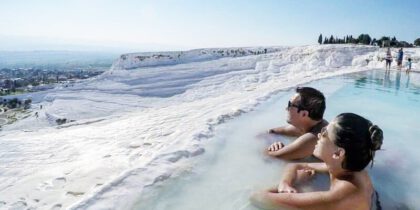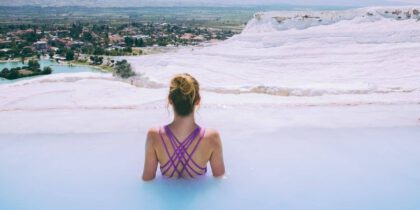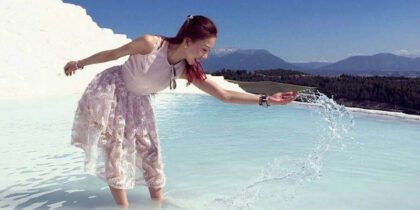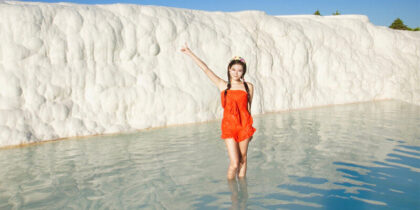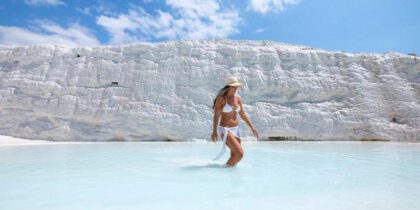-
Make a trip to the wonder of nature of Turkey with our 2 days Pamukkale tour from Istanbul with a hot air balloon flight. Pamukkale is home to a large proportion of mineral-healing water resources. Because of this feature, travelers visit... Read More...
- 2 Days
- Regular
- Everyday
- Istanbul
- Istanbul
- +
-
Pamukkale is a great destination to discover in Turkey. With the Pamukkale day trip from Istanbul, you can explore Pamukkale in just one day. A wonderful option to escape for a day from Istanbul. Pre-arranged flight tickets and transfers. Travel... Read More...
- Long Day
- Regular
- Everyday
- 05:00
- 20:40
- +
-
If you have already roundtrip airfares to Denizli and only have a day for Pamukkale, want to spend it with knowledgeable guides and professional crew, this is the best option you can get. Pamukkale is one of the most visited... Read More...
- Full Day
- Regular
- Everyday
- 08:00
- 17:30
- Bus
-
Pamukkale is one of the most visited tourist destinations in Turkey. All the historical and natural values in the Pamukkale region are visited by thousands of tourists every year. The area is an excellent destination for both domestic and foreign... Read More...
- Full Day
- Regular
- Everyday
- 08:00
- 18:30
- Bus
-
Pamukkale is one of the important places in the Aegean Coast of Turkey. What makes Pamukkale famous is the cotton structure that occurs after calcium carbonate precipitates when it meets oxygen. In the travertines, natural pools are filled with water... Read More...
- Long Day
- Regular
- Everyday
- Cappadocia
- Pamukkale
- +
-
Beauties of Pamukkale calcium terraces awaits. By only a short tour bus drive you will reach to famous calcium terraces Hierapolis Ancient City ruins. Hundreds of years old ancient settlement still dazzling and nature’s wonder Pamukkale with its mind-blowing attractiveness... Read More...
- Full Day
- Regular
- Everyday
- 09.30
- 15:30
- Bus
-
Pamukkale, with its natural beauty and historical sites in Turkey, is one of the most important regions to be visited. One of the most important tourist areas in the region is Pamukkale Travertines. Of course, there are also some special... Read More...
- Full Day
- Regular
- Everyday
- 07:00
- 20:00
- Bus
-
Pamukkale is a touristic area located in Turkey, Denizli. The region has many historical and natural beauties. It is known that many local and foreign tourists visit the region every year. One of the most enjoyable activities in Pamukkale is... Read More...
- 1 Hour
- Regular
- Everyday
- 05:00
- 07:00
- Bus




